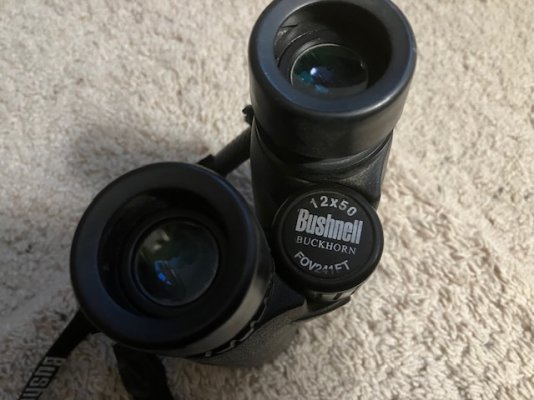rk911
Thinks s/he gets paid by the post
Over the years we have acquired 5-pairs of binoculars. We didn't buy any of them but received one pair as a gift many years ago and the others were parts of estates left by my late brothers-in-law and mother-in-law. We don't need 5-pairs so we'd like to try and sell three of them and keep the other two. The question...which to sell and which to keep.
We have:
#1-Bushnell Ensign 7x50, 367ft@1000yds. No eye or lens caps but with a soft case.
#2-Two Tasco Sonoma 8x40, ZIP Focus (?), Wide Angle, 450ft@1000 yds, some eye and lens caps missing, soft cases.
#3-Tasco 7x35, ZIP Focus, 420ft@1000yds, some eye and lens caps missing, soft cases.
#4-Traq Model 3002, 7x35, Wide Angle 10-deg, 525ft@1000yds, Hard case
We don't do bird watching or anything of that sort but we have occasionally used some of these on vacation trips.
Which would the group recommend we keep and why? I've looked up the value of the binocs online and am seeing values from $20-$40. Does that sound about right? I think we've had the the Traq (#4) the longest...maybe 35-40 years.
Thanks.
We have:
#1-Bushnell Ensign 7x50, 367ft@1000yds. No eye or lens caps but with a soft case.
#2-Two Tasco Sonoma 8x40, ZIP Focus (?), Wide Angle, 450ft@1000 yds, some eye and lens caps missing, soft cases.
#3-Tasco 7x35, ZIP Focus, 420ft@1000yds, some eye and lens caps missing, soft cases.
#4-Traq Model 3002, 7x35, Wide Angle 10-deg, 525ft@1000yds, Hard case
We don't do bird watching or anything of that sort but we have occasionally used some of these on vacation trips.
Which would the group recommend we keep and why? I've looked up the value of the binocs online and am seeing values from $20-$40. Does that sound about right? I think we've had the the Traq (#4) the longest...maybe 35-40 years.
Thanks.


 We’ve each had the 8.5x42 bins which has been an absolutely outstanding birdwatching optics we’ve enjoyed for decades. More recently we’ve each bought a lighter, more compact 8x32 bins which we prefer for traveling.
We’ve each had the 8.5x42 bins which has been an absolutely outstanding birdwatching optics we’ve enjoyed for decades. More recently we’ve each bought a lighter, more compact 8x32 bins which we prefer for traveling.
